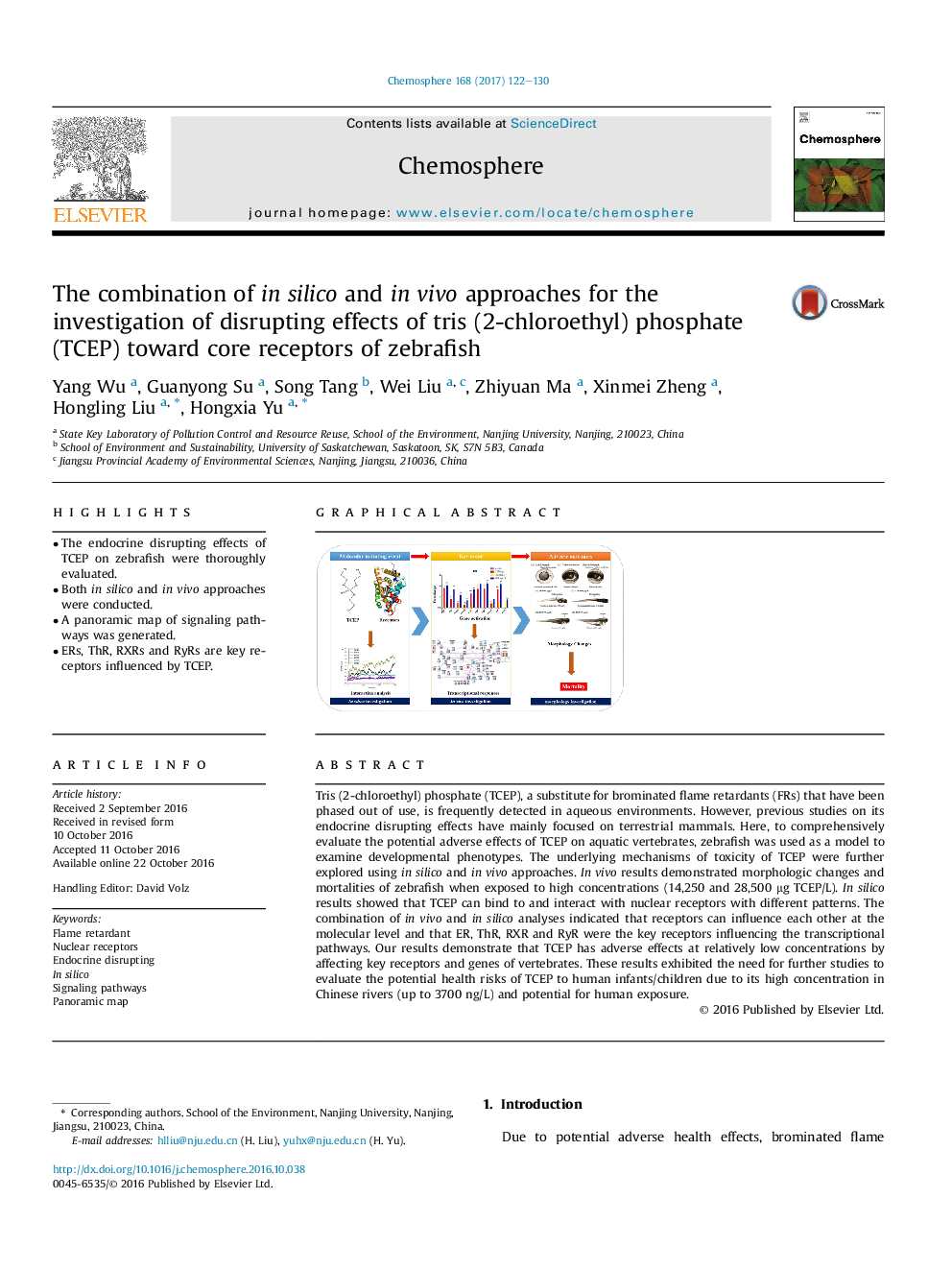| کد مقاله | کد نشریه | سال انتشار | مقاله انگلیسی | نسخه تمام متن |
|---|---|---|---|---|
| 5746655 | 1618803 | 2017 | 9 صفحه PDF | دانلود رایگان |

- The endocrine disrupting effects of TCEP on zebrafish were thoroughly evaluated.
- Both in silico and in vivo approaches were conducted.
- A panoramic map of signaling pathways was generated.
- ERs, ThR, RXRs and RyRs are key receptors influenced by TCEP.
Tris (2-chloroethyl) phosphate (TCEP), a substitute for brominated flame retardants (FRs) that have been phased out of use, is frequently detected in aqueous environments. However, previous studies on its endocrine disrupting effects have mainly focused on terrestrial mammals. Here, to comprehensively evaluate the potential adverse effects of TCEP on aquatic vertebrates, zebrafish was used as a model to examine developmental phenotypes. The underlying mechanisms of toxicity of TCEP were further explored using in silico and in vivo approaches. In vivo results demonstrated morphologic changes and mortalities of zebrafish when exposed to high concentrations (14,250 and 28,500 μg TCEP/L). In silico results showed that TCEP can bind to and interact with nuclear receptors with different patterns. The combination of in vivo and in silico analyses indicated that receptors can influence each other at the molecular level and that ER, ThR, RXR and RyR were the key receptors influencing the transcriptional pathways. Our results demonstrate that TCEP has adverse effects at relatively low concentrations by affecting key receptors and genes of vertebrates. These results exhibited the need for further studies to evaluate the potential health risks of TCEP to human infants/children due to its high concentration in Chinese rivers (up to 3700 ng/L) and potential for human exposure.
In the part of “in silico investigations”, TCEP structure was drawn by ChemBioDraw (ChemBioOffice 2008, CambridgeSoft, Corp., USA). Receptors were generated and captured in PyMol (Version 0.99, open source), and the “interaction analysis” was generated by Origin 8 (OriginLab Corp., Northampton, MA, USA). In the part of “in vivo investigations”, gene activation was drawn by graphpad (GraphPad Software, San Diego, CA, USA), and panoramic map of signaling pathways was integrated within Cytoscape software v3.1.1 (Cytoscape consortium, San Diego, CA, USA). In the part of “morphology investigation”, morphology effects on embryos/larvae were taken by an inverted stereomicroscope (Nikon Corp., Tokyo, Japan) in the State Key Laboratory of Pollution Control and Resource Reuse at School of the Environment of Nanjing University.261
Journal: Chemosphere - Volume 168, February 2017, Pages 122-130